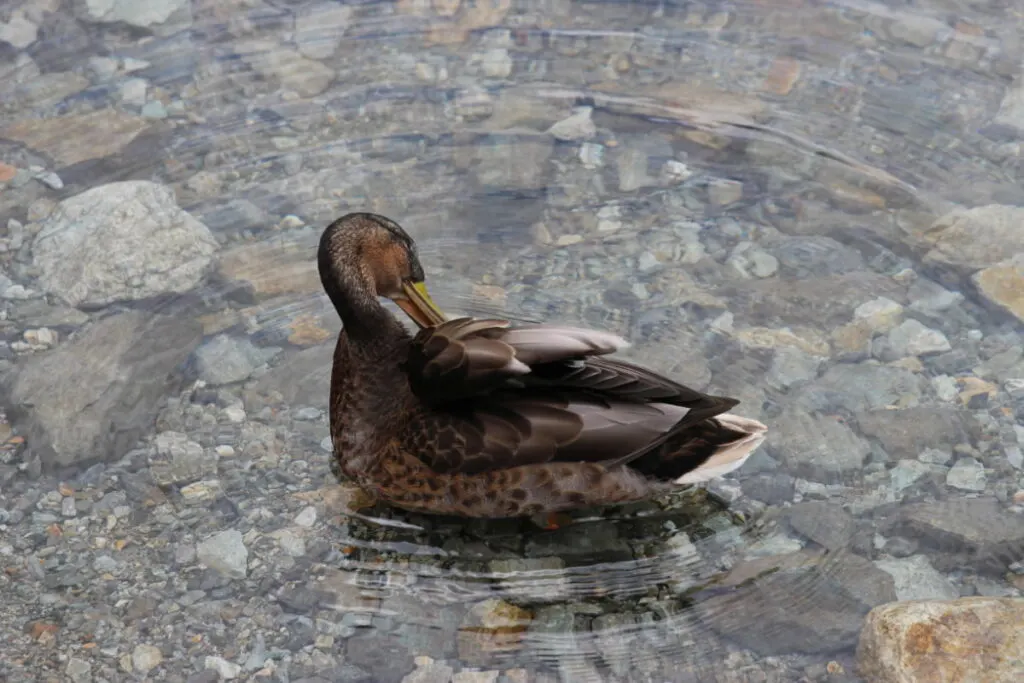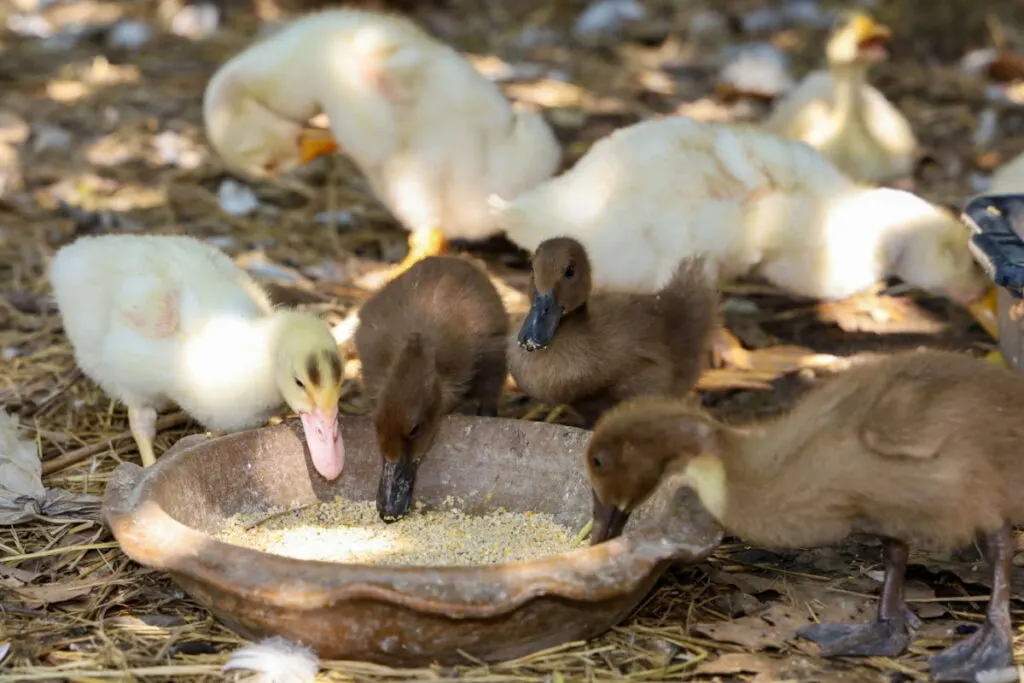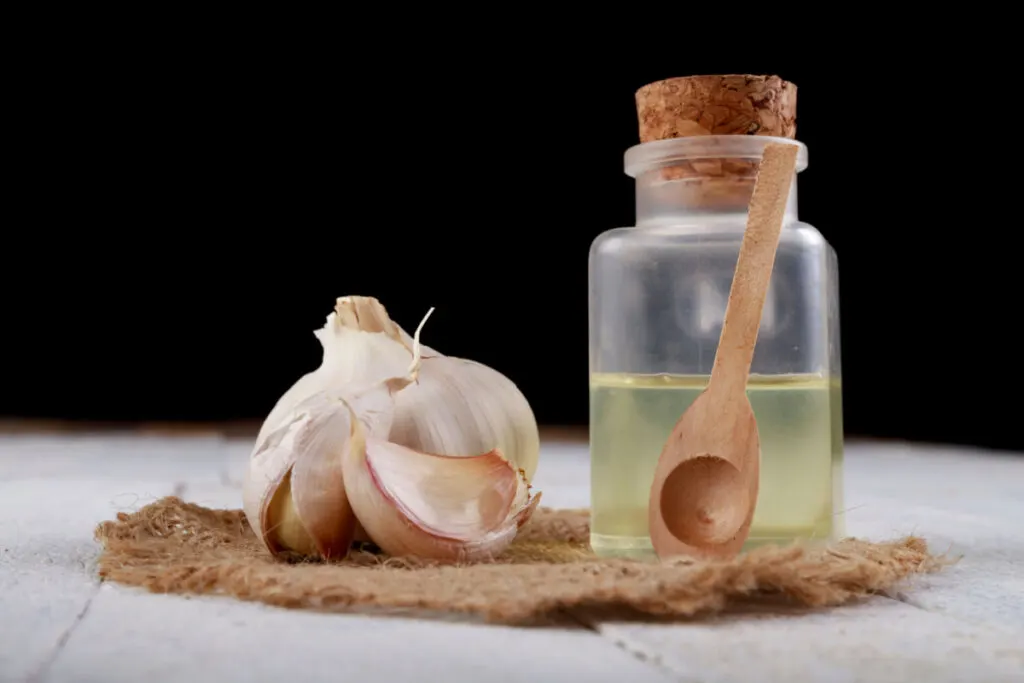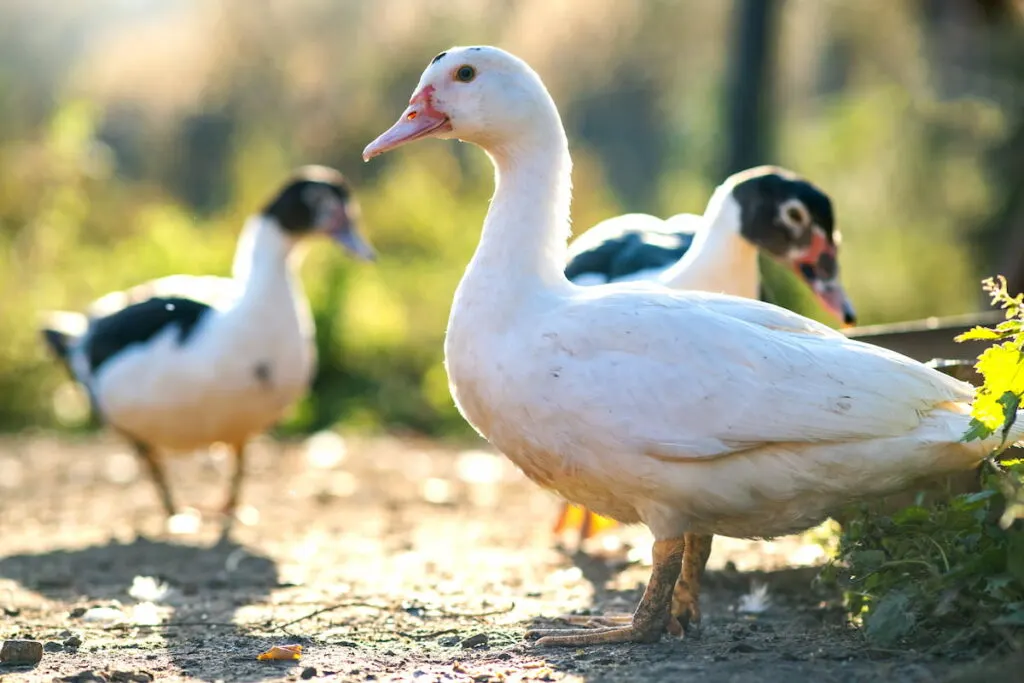If you love ducks like me and raise them as pets or for commercial purposes, you know how prone they are to a parasite attack.
Duck mites and lice are common parasites that attack and cause harm to your ducks’ health.
It is crucial to control and prevent these parasites and shield your birds from discomfort, irritation, and secondary infection.
You must check them regularly and act when you spot the parasites.
This article explores how to identify duck mites and lice and the prevention and control measures.

Table of Contents
Identifying Duck Mites and Lice
Duck mites are tiny parasites with eight legs. They are black and like hiding under ducks’ feathers as they suck blood from beneath the host’s skin.
Lice are tiny parasitic insects with six legs. They appear in varying colors, mostly gray, dark brown, and white.
Due to their small size and dull skin, duck mites and lice are difficult to spot.
But if you see any of the following symptoms, inspect your ducks for possible infestation.
- Dull-looking feathers, which are ruffled and dark
- Low egg production
- Loss of feathers
- Itchiness (ducks scratching their bodies using their beaks)
- Dry skin around the vent, which is rough. This area has a lot of dead skin (scaly).
- Broken feathers due to scratching
- Frequent preening causing feather loss or destruction
- Lice and duck mites appearing on the feathers
Ducks and other birds infested by these parasites suffer from itchy skin. In extreme cases, they develop skin lesions.
Other harmful effects of lice and mites on birds include:
- Loss of feathers exposing your birds to cold.
- Intense skin irritation.
- Weight loss as birds lose a lot of blood.
- Digit necrosis, which results from scratching.
- Secondary infections from bacterial attack.
Preventing Duck Mite and Lice Infestation
You can prevent duck mite and lice infestation in birds by maintaining environmental hygiene and by pesticide application.
Keeping these parasites at bay is more manageable than eliminating them after infestation.
The following practices will help you prevent a parasitic attack in your poultry.

1. Regular Cleaning and Disinfecting of the Duck Coop
Cleanliness helps to prevent parasites from attacking your ducks. If you regularly clean your ducks’ resting and sleeping areas, the parasites won’t hatch and multiply.
Lice and mites like hiding in the coop.
Therefore, ensure you inspect it regularly and keep it hygienic.
And when cleaning your duck’s coop, add vinegar or Virkon powder to the water. These chemicals are gentle to ducks but harmful to parasites.
Any detergent with antiseptic properties also works well in eliminating lice and mites.
After cleaning, spray the coop with an antiseptic spray to kill mites in hidden places.

2. Proper Nutrition and Hygiene of Ducks
Feeding your ducks and giving them water is essential for their growth. But proper nutrition deters mites and lice.
If you wonder how this happens, it is simple.
The food products you feed to your ducks can be harmful to mites. For example, mites and lice cannot tolerate garlic.
When giving your ducks water, add garlic juice. Since duck mites are allergic to sulfur in the garlic, they will flee.
Note that putting too much garlic in your ducks’ drinking water is dangerous.
Therefore, the garlic water ratio should be 1:10. Add an ounce of garlic juice to about 10 ounces of water.
3. Use of Dust Baths
Another effective way to prevent lice and mites is using a dust bath.
Although ducks like dust bathing anywhere, training them to bathe in one spot is helpful.
You should sprinkle wood ash or diatomaceous earth (DE) on the bathing spots, which cover the skin with a protective layer.
Also, create the dust bath in a shaded area to avoid hurting your ducks with hot sand.
Dust baths are economical and safe because they don’t expose your ducks to chemicals.
Furthermore, they are cheaper and highly effective since they kill parasites through agitation and suffocation.
Keep changing the sand or ash in the dust bath regularly to prevent the parasites from breeding and spreading to uninfected ducks.
You should also ensure the baths are dry, since parasites thrive in warm, moist conditions.

4. Regular Inspection of Ducks
A stitch in time saves nine, and so does regular duck inspection in mite and lice control.
Inspect your ducks regularly because it’ll help you spot signs of a parasite attack before it gets bad.
Examining them alerts you of any abnormal behavior and the presence of parasites under their feathers.
You should act quickly to eradicate any mites before they multiply and become difficult to manage.
After inspection, the following practices are helpful in parasite control:
- Pesticide and insecticide application
- Maintaining cleanliness in your duck’s living and sleeping area
- Adopting and including medicinal feed in the ducks’ drinking water and food.
- Providing adequate housing to your ducks to avoid congestion
The best time to inspect ducks for lice and mite infestation is at night because the parasites are active.
However, you can also check for signs such as scratching and preening during the day when ducks are active.
The favorite spots for parasites are:
- At the base of the tail
- Behind the neck
- Under the wings
- The vent area
It’s crucial to pay close attention to the above areas.
Controlling Duck Mite and Lice Infestation
Preventive measures sometimes fail, especially when introducing new ducks to your home. Therefore, you should also know how to control them and restore your ducks’ health.
The following methods are effective in lice and mice control:
1. Chemical Treatments
Chemical treatment is effective in eradicating lice and mites in ducks after infestation. Before application, ask a veterinarian about the ideal pesticide for your ducks.
Pesticides come in different forms, including powder, liquid, or aerosols.
The mode of administering depends on the form and side effects on birds.
Before applying chemical treatments, read the instructions and directions for use from the manufacturer and apply the recommended amount.
Here are three common chemical treatments for ducks:
- Dusting. Apply the prescribed amount evenly on the infected areas and where your ducks sleep.
- Spraying. Apply the aerosol evenly on the exposed skin and the ducks’ house, especially the sleeping area.
- Washing the coops with disinfectant water. During a regular cleaning, you can use pesticide water and clean your duck’s house, ensuring you reach all the hidden places. This exposes the parasites to harmful chemicals, causing their death.
Note that this method is effective, but frequently using chemicals may lead to parasite resistance, rendering them ineffective. Therefore, you should use it sparingly.

2. Natural Remedies
The natural remedies for lice and mite control in ducks are routine practices, which are only effective after continuous use.
You should incorporate them in daily, weekly, or monthly cleaning and feeding practices. They include the following.
| Remedy | Application Mode | How it Works | Application frequency |
| Diatomaceous earth (DE)/wood ash added to the dust bath | Add diatomaceous powder or wood ash to the dust bath. Renew biweekly. | Suffocates the parasites | Daily until parasites disappear |
| Garlic juice | Add garlic juice to water or spray directly on the infested areas. | The garlic smell drives away the parasites. | Daily until parasites disappear |
| Coop cleaning | Use water mixed with detergents and disinfectants to clean coops. | Detergent and disinfectant kill parasites. | Regularly |
| Coop-mite spray | Mix water, soap, and oil and spray on infested areas. | The spray hinders movement, leading to death from starvation and suffocation. | Daily until parasites disappear |
3. Biological Control:
Using organisms and microbial insecticides to kill lice and duck mites is called biological control.
Unlike chemical treatment, this method is environmentally friendly and less harmful to humans and other organisms.
You can use this method in the following ways:
- Natural predators. The Androlis predatory mite feeds on parasite eggs, larvae, pupa, and adult mites. If you introduce predatory mites to your ducks’ coop, they can eradicate the parasites within a short time.
- Use of microbial insecticides. These remedies are prepared from microorganisms and only kill mites but do not affect birds and humans.
- Applying nematodes (Steinernema feltiae). Applying these nematodes to the soil around your poultry house releases bacteria and viruses that kill the parasites.
Biological control takes time to eradicate duck mites and lice in ducks. However, it’s highly effective and friendly since the non-targeted organisms are safe.
Furthermore, parasites don’t develop resistance to predators and biological pesticides when you use biological control methods.

Final Thoughts and Advice
Raising healthy ducks free of parasites results from your daily routine. Maintaining cleanliness, applying natural remedies, and regular inspection help keep parasites at bay.
However, if you spot the parasites after infestation, choose a control method that can suppress their increase before working consistently to eradicate them.
Note that methods like chemical control can cause more harm if you fail to follow the right directions.
Therefore, consult a veterinarian for guidance before administering chemical pesticides. And to prevent parasites developing resistance, use chemical pesticides sparingly or embrace natural and biological methods.
Resources
- https://www.thehappychickencoop.com/duck-mites/
- https://animallova.com/how-to-clean-and-disinfect-a-duck-coop
- https://www.hobbyfarms.com/4-ways-to-beat-mites-naturally/
- https://www.chickenheavenonearth.com/how-to-tell-if-your-chickens-have-mites-or-lice.html
- https://www.freedomrangerhatchery.com/blog/how-to-get-rid-of-chicken-mites-and-lice-naturally/
